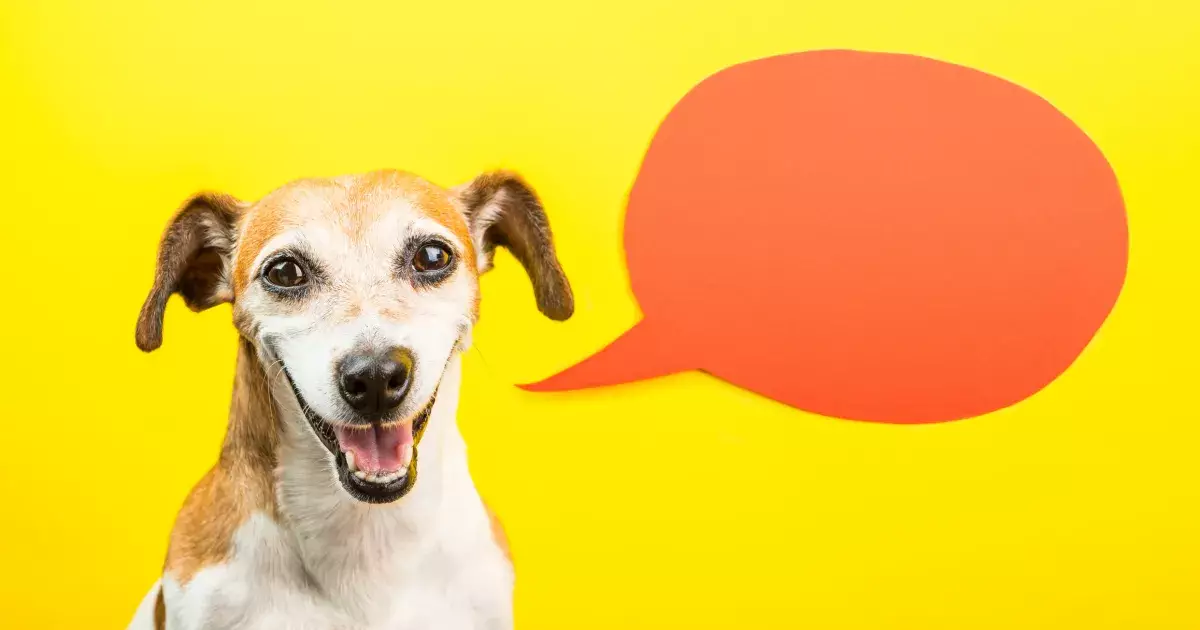Teaching your dog to communicate with you through dog talking buttons can be an incredibly rewarding experience. These interactive devices allow pups to express their needs and desires in a unique and engaging way. While you may have already researched dog buttons or even ordered a set, understanding how to effectively use them can be crucial in fostering better communication with your furry friend.
Dog talking buttons have surged in popularity among pet owners in recent years, largely due to their intuitive design and the incredible potential they hold for enhancing dog-human communication. Essentially, these buttons, when pressed by your dog, play a recorded audio clip corresponding to a specific word or phrase, such as “walk,” “treat,” or “outside.” This simple form of communication empowers dogs to articulate their wants, ultimately strengthening the bond between you and your pet. Dogs have their own methods of communication, from barking to body language, so introducing buttons simply expands their vocal repertoire in a manner that is both fun and effective.
Though videos showcasing dogs and other animals using these buttons often go viral, leading many pet parents to want to replicate their success, the journey to effective communication requires a solid understanding of how to train your dog to use these devices.
The first step in introducing dog talking buttons is to keep the training sessions enjoyable and low-pressure. Begin with a few simple buttons that convey essential commands or requests that resonate with your dog. For example, if your dog is particularly motivated by treat time or outdoor adventures, using buttons that express these desires will facilitate a quicker learning process.
Consistency is critical when teaching your dog to use these buttons. Dogs respond well to repetition, so consider demonstrating the button’s function multiple times. When you want to take your dog outside, say the word while simultaneously pressing the button, creating a natural connection between the action and the command.
As you proceed with this training, it’s imperative to employ positive reinforcement techniques. Offer treats, praise, or playtime whenever your dog successfully interacts with the button, reinforcing the behavior you want them to repeat.
To help your dog develop a clear association between the button and the desired action, strategically place the buttons in relevant locations. If your dog loves to go outside, position the “outside” button next to the door. This spatial association makes it easier for your dog to grasp the function of the button. Reinforcing these associations can pave the way for more complex dialogues in the future.
Using familiar words during training sessions can also bolster the learning experience. If your dog perked up at the sound of “walk” or wags their tail when you mention “treats,” incorporate these words into your button training. As your dog starts to press the buttons to communicate their wants, these previously established associations will enhance their understanding.
Another vital aspect of training involves modeling the desired behavior. As young creatures, dogs learn through observation, so it’s essential that you demonstrate the button-pushing action clearly. By verbalizing the command, pressing the button, and then fulfilling the request (like opening the door for outside), you can employ both verbal and non-verbal cues to reinforce learning. This kind of training creates a clear visual and auditory connection in your dog’s mind, making it easier for them to emulate the behavior later.
Shaping is a popular dog-training technique that breaks larger commands into smaller, manageable steps. Start with the most basic interaction—getting your dog to press the button. At first, you may need to reward them just for nudging or touching the button, regardless of whether they intended to activate it. As they grasp the idea of using the button, increase the difficulty by waiting for intentional presses and rewarding successful attempts.
The rewards should be immediate, making the link between the action and the positive reinforcement clear. Once your dog comprehends that pressing a specific button leads to a reward, you can gradually introduce more buttons, expanding their communication vocabulary.
The training experience should remain enjoyable for both you and your dog. When you create a fun, engaging environment, you position your dog to learn faster and help sustain your motivation. If either of you feels overwhelmed at any point, don’t hesitate to take a break. Remember, patience is key. Every dog learns at their own pace, and celebrating small accomplishments will lead to bigger successes over time.
Dog talking buttons offer a remarkable avenue for communication that can deepen your relationship with your pet. With consistent training, a positive atmosphere, and plenty of encouragement, your dog can open new channels through which they can express their wants and needs. Enjoy the process of teaching, and revel in the beautiful moments of understanding that emerge.


Leave a Reply